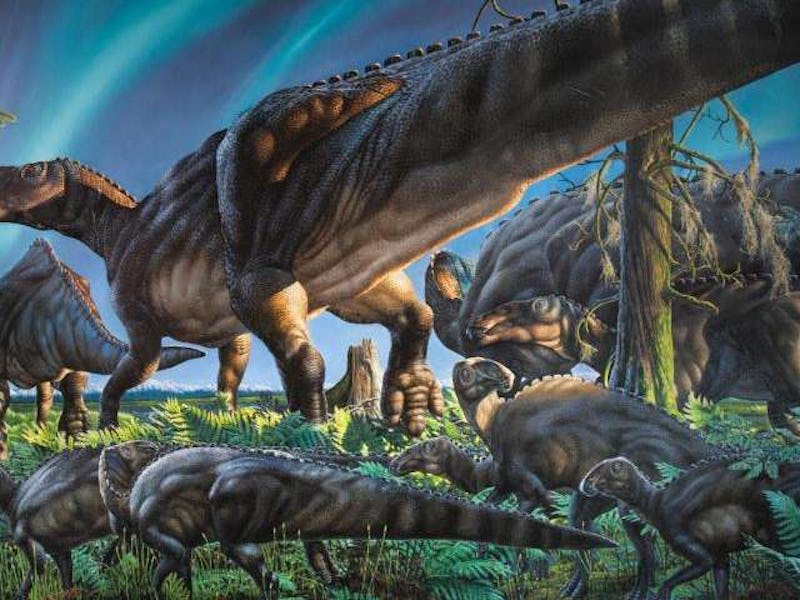Dinosaur Bones in Alaska Reveal a Cold-Weather Creature
We think of them as tropical creatures, but fossils in Alaska reveal a creature that thrived in the cold and the dark.

A newly discovered dinosaur species in Alaska presents new evidence the prehistoric animals were able to survive and thrive in climates far colder than were once considered hospitable.
“It wasn’t so long ago that the idea of dinosaurs living up in the polar world was kind of, you know, really? Are you kidding?” Patrick Druckenmiller, earth sciences curator of the University of Alaska Museum of the North, told The Washington Post.
For most of dinosaurs’ known existence, with our limited understanding of their metabolism, we tended to think of them as tropical animals. The newly discovered duck-billed Ugrunaaluk kuukpikensis (pronounced oo-GROO’-nah-luk KOOK’-pik-en-sis), a herd animal whose remains were found in rock deposits 69 million years old, managed to survive in large numbers in an environment where there was no sunlight for three to five months at a time, and average temperatures hovered around the low 40s.
“And that means that it thrived in an area that was — at least for a dinosaur — remarkably cold. By reptilian standards, that’s pretty chilly,” Druckenmiller said. “These were dinosaurs living at the very edge of what we think dinosaurs were physiologically capable of.”
The AP reports the species’ bones had been confused with the bones of the Edmontosaurus for about 25 years until a formal study finally revealed the differences in the skull and mouth. This new species grew up to 30 feet in length, likely walked on their hind legs, and had hundreds of teeth to chew tough vegetation.
Alaska, considered one of the final frontiers for paleontology, has already yielded some 10,000 bones from the species. Whether they provide enough evidence to show if this species had special adaptations to survive in the cold could change how researchers think of dinosaur physiology.